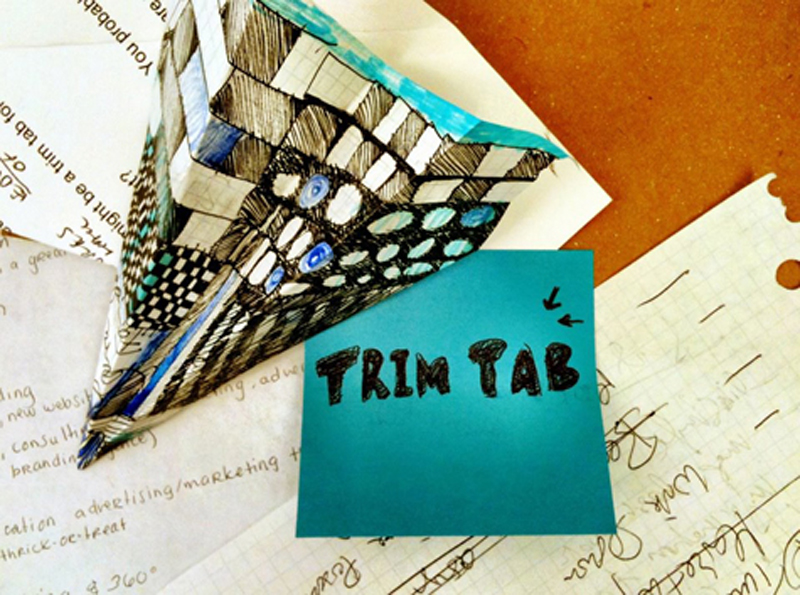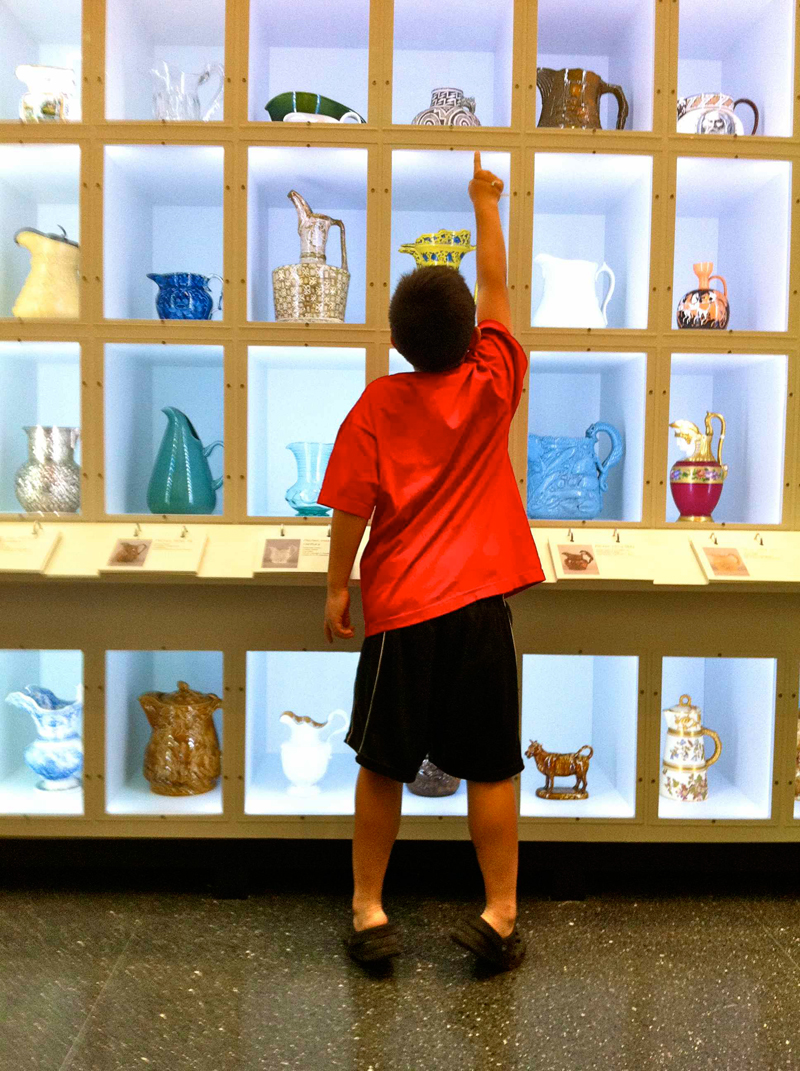I introduced the metaphor relating to consumer insight in a post back in May, “Call me trim tab.” I want to take this idea further and look at how it applies to what we do. Everyone should be marketing themselves (see Not to Market is a Crime) but it can be costly, and for many organizations cost is a significant hurdle. This is where trim tab thinking can make a huge difference.

What can you do that will be effective at getting the word out but will not break the bank?
Are there relatively inexpensive tactical shifts you can make right now that will yield significant long term results?
The answer is yes. It’s just a matter of finding them.
They will not be obvious or easy. We often expect big changes to come from big things, and marketing campaigns can certainly be big, but as Malcolm Gladwell points out in The Tipping Point, if you look closely at “epidemic ideas or messages,” the critical factor often turns out to be something that may seem on the surface to be small and trivial. This critical leverage point is what we call a trim tab. It’s an insight leading to tactical changes that gives you leverage far greater than what’s apparent from the face value significance of the modification.
One thing that almost any organization can do—and many do not with sufficient seriousness—to get the trim tab discovery process going is to create customer personas. By this I do not mean dry collections of facts and data about your customers, but fully thought through stand-ins for actual persons that represent the key types of customers that you have. Each persona has a name and detailed characteristics so it can guide you to have a complete mental image that you can use to test your ideas from their perspective. It must live in sharp enough focus to allow anyone in the organization to go and essentially ask that person “What do you think of this?” and get a useful answer.
Each persona has a name and detailed characteristics so it can guide you to have a complete mental image that you can use to test your ideas from their perspective.
This is not a dashed together persona or a demographic type, but a fully fleshed out mental model. It is hard work to create a good persona, but the payoff is mighty.
In a recent persona development exercise with a client, she brought in what she believed was her ideal customer persona. It represented a very large swath of her potential audience. We developed this persona in a 3-hour meeting and she really came to life. Then when we were writing a journal entry in her voice and describing her experiences with our client’s product, it immediately became clear that this person would never actually recommend or even use our client’s product with any frequency. Compare these 3 hours to the cost of a full marketing program intent on selling to this person. Short of massively marketing or changing the product completely to match her needs, this exercise made it absolutely clear that this would never have worked. This opened the way for us to focus on slightly smaller yet far more receptive groups within her existing client pool. This was time well spent.
Compare these 3 hours to the cost of a full marketing program intent on selling to this person.
Along the way we also unearthed a key insight into the motivation of almost all of her customers—a desire for fun—that she had never recognized before. The implications of this discovery, and the small shifts that it makes possible will, I believe, set the course for a complete transformation of her business. This notion of fun was not naturally part of the owner’s personality, and so was not built into the DNA of the brand. But importantly, it was also something that was not wrong for the brand at all. It was just missing. Adding it will involve almost no extra costs, and yet it will make every customer that she already has, and every one she ever will get, a little more connected to her brand, a little more likely to remember it, and a little more likely to recommend it to others. The effects of this consumer insight discovery will play out over years, yielding benefits both tangible and intangible. One thing though is already certain: That was 3 hours very well spent.
Arnold Lehman, the director of the Brooklyn Museum is, I think, a visionary leader. He may have recently, in one simple directive, activated a trim tab for his institution. This is what he did: He decided that everyone in the institution, on a constantly rotating basis, was going to be required to schedule an hour of their time on the floor of the museum. This floor rotation is required of everyone, CFO, chief curator, archivists, research assistants. They would each be required to spend this periodic hour of their work life directly interfacing with the visiting general public—the customer. This allows them to observe their behavior, talk to them, see how their work product is actually consumed. This allows them to obtain first hand critical consumer insight.
How can consumer insight help activate a trim tab?
The gallery floor is precisely the place where big things—big ideas, big plans, big exhibitions—often break down or fail.
It seems small, it’s not an obvious thing to do, and it’s not very costly, but I believe its impact will be huge. If you believe that one key reason the Brooklyn Museum exists is to be a public place that mounts exhibitions for the general public’s enjoyment and inspiration, then this simple act requires that EVERY member of the institution at every level take a prolonged look at what this idea really means, but even more importantly that every staff member be required to experience this at the level of human interface (on the gallery floor). This is precisely the place where big things—big ideas, big plans, big exhibitions—often break down or fail. This requirement forces everyone in the institution to experience the final interface and its detailing in action. This exposure and experience will over time lead to tactical and inexpensive changes and improvements that will yield other significant and again “small” improvements. I believe these will have a significant, long-term positive impact on the delivered consumer experience at the museum.
I heard about this innovation at AAM2012. It felt to me like a great idea. I also heard that it was not universally appreciated by the staff. This makes sense. Why would the chief financial officer want to spend time on the floor answering visitor questions like, “Can I take a photograph here?” He probably wouldn’t, but consider this: I was at the Brooklyn Museum a few weeks ago and I walked into the Crossing Cultures exhibit and I immediately got excited. What a great exhibit I thought. I was alone and I needed to tell someone. Standing off to the side of the exhibit was an official-looking bearded man.
I walked up to him and told him what I thought. It turns out that he was the Curator of Egyptian, Classical, and Ancient Near Eastern Art, Edward Bleiberg, somewhat reluctantly doing his hour on the floor. We ended up talking for 45 minutes about the museum, the exhibit, and why I thought it was so great, and from his side, why it had been so difficult to mount. I think we both got valuable insights out of the interchange, and this could never have happened without this new rule.
I don’t know if Arnold Lehman is a reader (or former friend) of Buckminster Fuller, but as I see it, he’s clearly a seeker and activator of trim tabs.
You can watch my explanation of the trim tab in the video below:
If you are interested in talking to me about acquiring some consumer insight and finding a trim tab for your institution, please strike up a conversation. It’s the first step to see if we can help you find creative ways to make the world better.



Ask for help.
We are kind, thorough and ready when you are. You just need to ask.